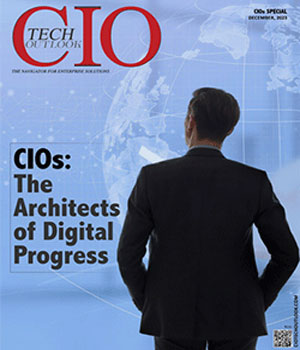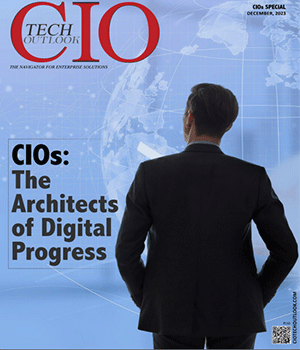
Incentivizing End Customer for Digital Adoption
Baljinder Singh, Global CIO, EXL
 Customers now expect companies to provide an array of digital channels for resolving their complaints or inquiries, increasing the pressure on businesses to provide consistent, customizable service across every medium. This change in how customers interact with organizations is disrupting the traditional channel of call centers as the primary source of customer care. Executives need to reassess their business models and prioritize instituting a digital agenda.
Customers now expect companies to provide an array of digital channels for resolving their complaints or inquiries, increasing the pressure on businesses to provide consistent, customizable service across every medium. This change in how customers interact with organizations is disrupting the traditional channel of call centers as the primary source of customer care. Executives need to reassess their business models and prioritize instituting a digital agenda.
The reward for organizations that succeed at digital customer care is vast
When run well, digital channels can increase customer satisfaction by up to 33% and generate savings of 25- 30% by reducing call center volume. Still, less than one in five companies have a detailed migration strategy, more than half have little or no migration budget and apply very basic migration initiatives. There are often insufficient incentives for switching to digital self-service channels, no monitoring for migration performance, designate who is responsible and accountable for migrating customers to digital channels.
Customers prefer self-service options
Consumers are not running away from self-service options — just poorly implemented ones. There are stark contrasts in what customers expect from a self-service channel and what organizations think is important.
Customers consider convenience to be of utmost importance for self-service options, while companies rate convenience as significantly less important than accuracy. Many self-service success stories focus on making a utilitarian task faster. The speed of transactions rates as the strongest influence on customer satisfaction for customers, while managers rated it significantly less important.
How to turn the digital game around Offer positive incentives
Companies can motivate customers to change their transaction behaviors by providing positive incentives that encourage moving to digital support channels.
Surveys showed that more than half of customers would be willing to switch to low-cost digital channels if they were given positive fee-based incentives -- such as increasing annuity rates by 0.25% -- or positive incentives that enhance the functionality of digital channels – such as live video interaction with agents on mobility enabled portal.
Set positive defaults
Another approach organizations can use to encourage digital adoption comes from behavioral economics research, specifically the concept of positive defaults. For example, automatically setting digital channels as the optimum default for customers buying or renewing a policy is an effective way to encourage using this lower-cost medium
Creating a unique digital customer journey
To ensure future positive customer experiences, companies need to ensure a seamless omni-channel customer experience throughout the entire customer journey. This requires examining the purchase process from a customer’s viewpoint, straight-through service and claims management, improving retention and generating awareness and positive word-of-mouth advertising.
A one-size-fits-all customer approach must be replaced by personalized product solutions.
Exploiting mobile solutions to reach customers everywhere and anytime
Mobile channels open up multiple opportunities for insurance companies to enrich the customer journey anytime, anywhere. For example the health insurance startup Oscar offers its customers a mobile interface as well as highly transparent products and services.
Beware of unintended consequences
Defining an optimal channel use strategy is crucial for organizations that want to encourage customers to switch channels. But there can be unintended consequences to an increased reliance on digital transaction channels.
When customers use digital channels for simple tasks and transactions, they tend to rely on human channels like branches and call centers for complex or difficult transactions. Front-line employees must now spend more of their time addressing these complicated activities. If organizations don't take steps to ensure that staff members are armed with the tools and skills to resolve the most challenging customer problems, they won't realize any significant cost benefits from moving customers to digital channels.
Another unintended consequence is the remote user paradox when customers begin to prefer using digital channels over in-person channels. Once this preference is established, each in-person interaction with a company employee can have a disproportionate impact on that customer's relationship with the company. When a customer who mostly interacts over digital channel has a critical need to visit a branch, that one interaction will have a disproportionate effect on how the person perceives the branch experience -- and it could determine the future of their relationship with the organization.
It's important for organizations to be wary of these paradoxes when they begin encouraging customers to use digital channels. What initially looks like a benefit could quickly become a liability if the switch causes customers to become less engaged -- or to switch their business to another organization.
Though there are viable tactics for migrating customers to less expensive digital channels, organizations must approach this task with care. Understanding how customers are likely to react to these impending changes is a critical first step -- and one that can help them avoid a drop in customer engagement, revenue, profitability, and customer retention.
CIO Viewpoint
Gen AI: Transforming Cloud Solutions for...
By Matt Yanchyshyn, VP - AWS Marketplace & Partner Services, AWS
Upcoming Technological Advancements in Payments...
By Pinak Chakraborty, CIO of Airtel Payments Bank
Shaping the Future of AI: Talent, Innovation,...
By Yann LeCun, Chief AI Scientist at Meta
CXO Insights
A Glimpse of A Changed AI Perspective in India
By Dr. Vijay Srinivas Agneeswaran, Senior Director of Technology, Sapient
Social Networking and the Enterprise
By Arindam Sen, SVP, Schneider Electric
Digital Transformation - Darwinism Or Dwarfism?









